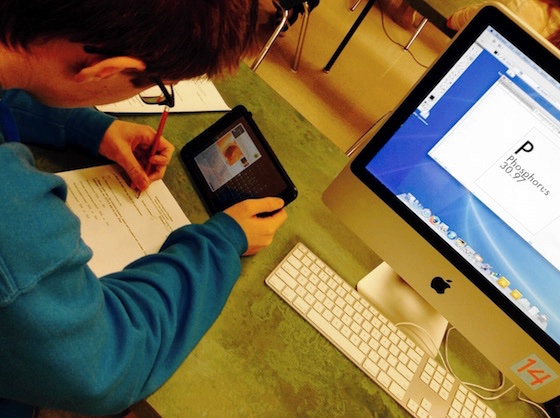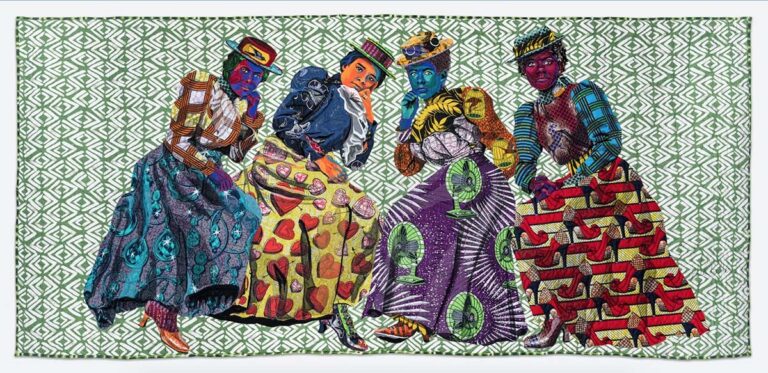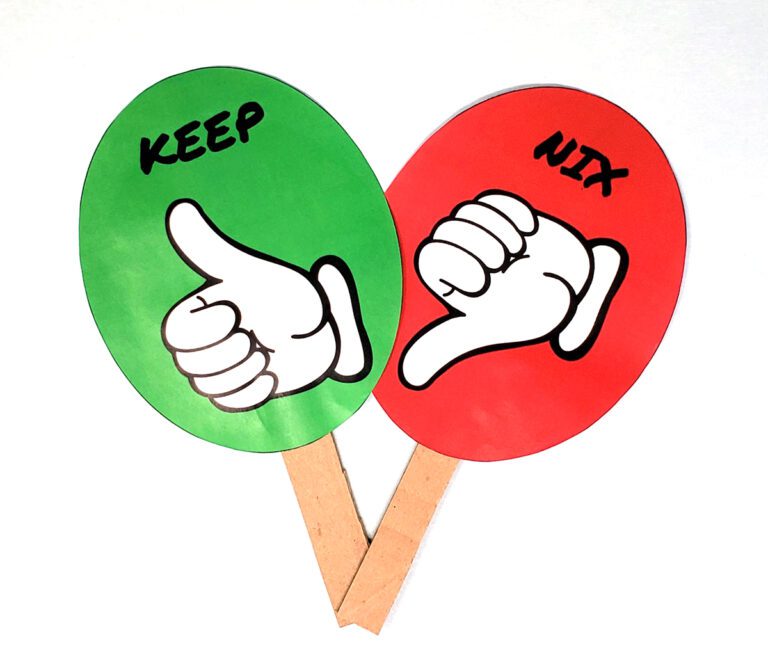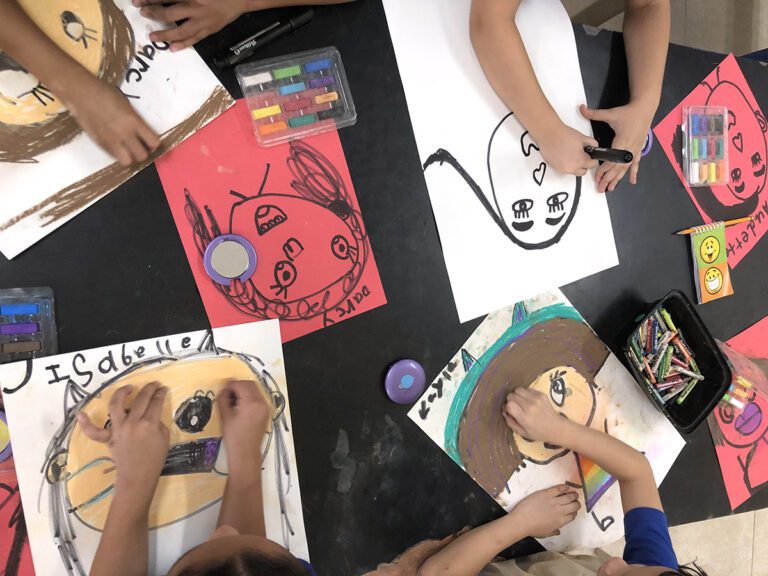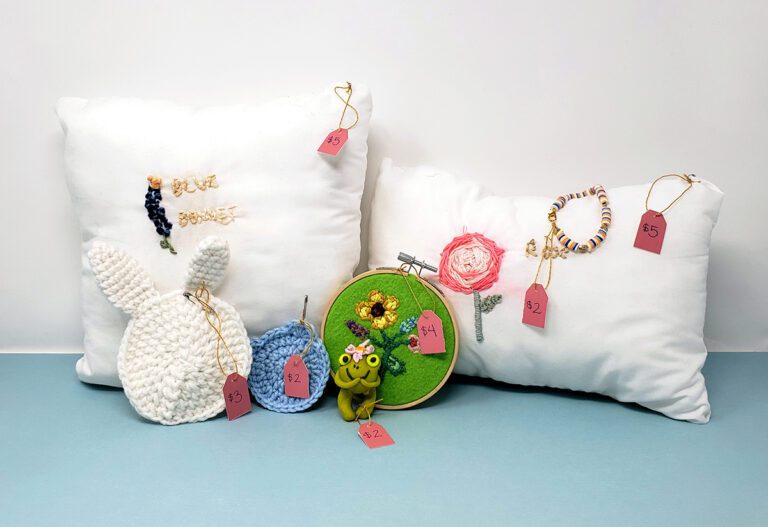A number of years ago, when my district was organizing an introduction of a 1:1 iPad program, I was asked if I was willing to give up my entire art supply budget to help fund the cost of the new technology. Although I was excited about the possibility of my students always having tech access, I was completely dumbfounded at the idea of how and why we would use an 8″ screen to replace tactile, malleable, and hands-on materials.
Fortunately for my students, I was able to keep my supply budget and have iPad access, as we passed a technology property tax levy later that fall. However, all the hype around increased tech use in classrooms, and its seeming-to-be-boundless list of benefits, has got me thinking — When is it not appropriate to encourage student technology use in the art classroom? How can art teachers strike the right balance?

Simplicity is Key
First, let me point out that I am not anti-tech. Currently, I serve on my district’s digital learning mentor team which provides us opportunities to envision, plan and cooperate with other teachers on how to use technology to strengthen our students’ development of 21st Century Skills. An art classroom can be an enhanced atmosphere of deepened critical thinking, authentic collaboration and communication, intense creativity and uninhibited curiosity through the addition of digital resources and technology. It is through a combination of resourceful instructional strategies (rooted in traditional, researched pedagogy) and high-quality digital media resources that students can continue to strive towards these goals.
When we first became a 1:1 iPad school, some of us teachers were obsessed with installing as many free apps as possible. We spent way too much time looking for the latest, newfangled app that would assist our students in completing even the simplest of tasks. Our devices became over-installed, disorganized messes that contained apps that were used only once or twice a semester. Worse yet, we spent a lot of class time teaching applications just to teach the technology instead of spending that time using the technology to deepen students’ critical thinking skills. We decided to make a change. We started to think about how we could pare down our technology choices to best serve students’ needs.
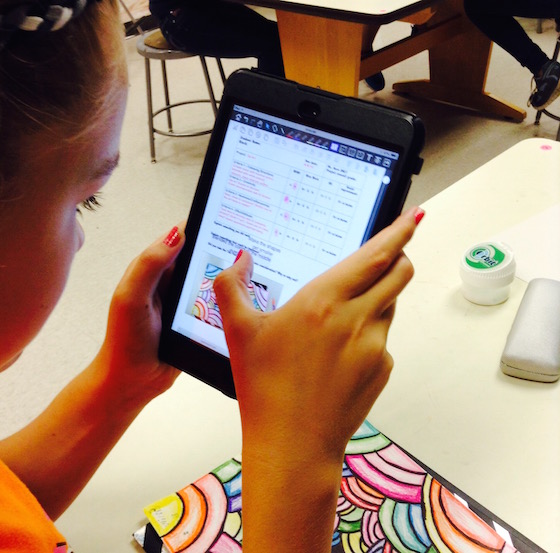
One way we did this was to focus on using applications that are cross-discipline. For example, I do not use a particular app in my classroom for electronic portfolios. Instead, I ask students to create their portfolios using any presentation app they feel comfortable with: Keynote, Haiku Deck, 30hands, etc. We do not spend any time with technology instruction since most students have had plenty of practice with these applications from their other core classes. We instead use our class time to dive into creating portfolios that answer deep questions, show true reflection and highlight creativity.
Technology Can Be More Than Just Another Art Medium
We tend to think of technology as purely another creation medium. Challenge yourself to think of technology not as an art-making medium but as a tool to deepen and expand some other, typically-forgotten aspects of art education.
Challenge yourself to think of technology not as an art-making medium but as a tool to deepen and expand some other, typically-forgotten aspects of art education.
Consider some of the new national visual art standards: Revise artwork in progress on the basis of insights gained through peer discussion (VA:Cr3.1.4a) or Demonstrate awareness of ethical responsibility to oneself and others when posting and sharing images and other materials through the Internet, social media, and other communication formats (VA:Cr2.2.7a). Both of these standards could be addressed through the use of technology in the classroom.
In addition, using a Learning Management System like Edmodo or Schoology can help you organize responsible communication and feedback collection between students in various classes, diverse grades or even different schools. Students are so accustomed to hearing opinions and revision suggestions from their nearby peers, that having the ability to communicate with new cohorts digitally is a welcomed change. However, we need to watch the frequency of this type of communication and expression; it is through the excessive use of online communication where we lose face-to-face interaction and, therefore, interpersonal communication skills. We are, after all, still teaching human kids that need authentic human connections.
Using technology in your classroom is truly a balancing act. Too much and you lose human aspects, not any- and you are missing true incentives and benefits in increasing your students’ 4Cs capabilities (Creativity, Critical Thinking, Collaboration, and Communication.). Blending the old with the new takes finesse, practicality and a willingness to see beyond the screen.
What is your take on technology use in the art room?
How do you enhance student learning with technology?
Magazine articles and podcasts are opinions of professional education contributors and do not necessarily represent the position of the Art of Education University (AOEU) or its academic offerings. Contributors use terms in the way they are most often talked about in the scope of their educational experiences.
